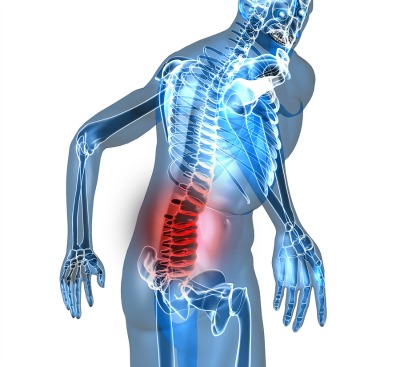Health Blog
Decreasing Back Pain - Education First

Education and exercise lead to many improvements for low back pain patients
Most people will experience low back pain at some point in life
Low back pain (LBP) is defined as pain, muscle tension, or stiffness in the lower region of the back near the hips. This bothersome condition affects 58-84% of all adults at some point in life, and has the power to interfere with many aspects of daily living like physical function, the ability to work and mental wellbeing. This makes LBP an extremely prevalent issue that needs to be addressed in order to help the many people who suffer from it. Education and exercise, which can be provided by a physical therapist, are proven effective ways of treating LBP, but the best type of intervention has not yet been determined from the available research. Therefore, a team of researchers conducted a study in which a combined program of education and exercise was given to a large group of patients with LBP to see if led to beneficial outcomes.
Education, exercise and encouragement of physical activity for 10 weeks
Patients between the ages of 18-65 who had LBP for at least six weeks were asked to participate in the study, and 668 agreed to partake. Each of these patients was then enrolled in a 10-week intervention, which consisted of the following three components: 1) four exercise/educational sessions that covered topics such as pain, the benefits of exercise, how to lift objects properly, weight management and the impact of stress and anxiety on LBP. 2) An exercise program of stability exercises and general aerobic conditioning, which was to be performed at least four times per week. 3) Encouragement to become more active in daily lives with activities like walking, cycling, swimming or any other type of cardiovascular exercises. Patients were also instructed to keep track of their adherence to the intervention and any additional physical activity they performed during this time.
Most patients improve in pain and disability after intervention
Three months after the intervention, most patients were found to improve in all measures taken. In fact, 524 patients (79%) reported that their LBP had improved due to the intervention, with almost half of these claiming that they were over 50% better than before the program. In addition, patients said they were less disabled and experienced reduced levels of stress following the intervention as compared to before it. This last point is especially important because low mood and high anxiety and stress are associated with chronic (long-lasting) LBP, so any intervention that also improves mental status is valuable for these people. This study shows that a program of education and exercise can be beneficial for improving the status of those who suffer from LBP. Since the intervention was only of moderate intensity, most individuals can perform it, regardless of their age or physical condition. Therefore, patients with LBP should see a physical therapist, who can provide them with a program of education and exercises similar to this to help them improve conditions and get around moving with less pain.
-As reported in the September 2013 edition of the Irish Journal of Medical Sciences
April 29, 2014
Back to Health BlogHEALTH BLOG
- A Personalized Physical Therapy Program Can Assist with Whiplash
- Why Older Adults Should Incorporate an Exercise Program
- After an Achilles Injury, Physical Therapists Can Help with Recovery
- AI Can Answer Questions But It’s Best to See a Physical Therapist
- Physical Therapy Can Help With Symptoms of Wryneck
- Reduce the Risk of Pickleball Fractures By Taking Proper Precautions
- Physical Activity May Slow the Progression of Parkinson's Disease
- Too Much Salt in Your Diet? Learn the Dangers of High Sodium Intake
- Suffer From Lower Back Pain? Might Be Time to Take A Break
- The Road to Recovery: Preventing Re-Injury After ACL Surgery
RECENT ARTICLES

- 11 Possible Reasons Your Back HurtsJune 22, 2020

- What Conditions Can a Chiropractor Treat?May 25, 2020

- A Simple Guide to Better PostureApril 30, 2020

- Is Acupuncture Right for Me When I’m Afraid of Needles?March 30, 2020

- Stretching Done Right — How and When to StretchFebruary 26, 2020

